In pictures: Swan Upping River Thames census begins
- Published
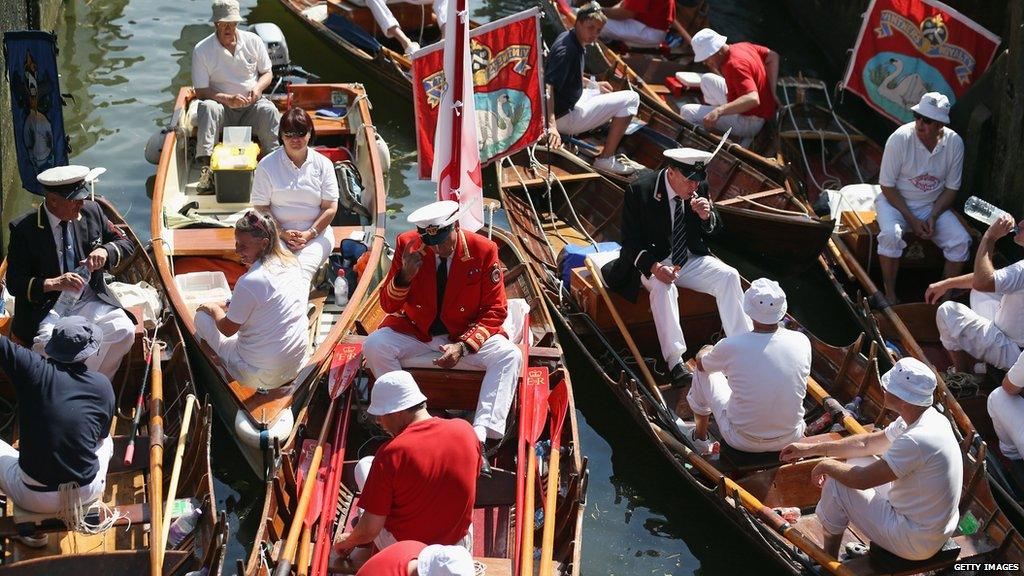
The River Thames Swan Upping ceremony - which sees all swans and cygnets caught, measured, assessed and tagged - dates back to the 12th Century. David Barber, The Queen's swan marker, (pictured centre) prepares to begin the five-day count from Sunbury in Surrey to Abingdon in Oxfordshire.
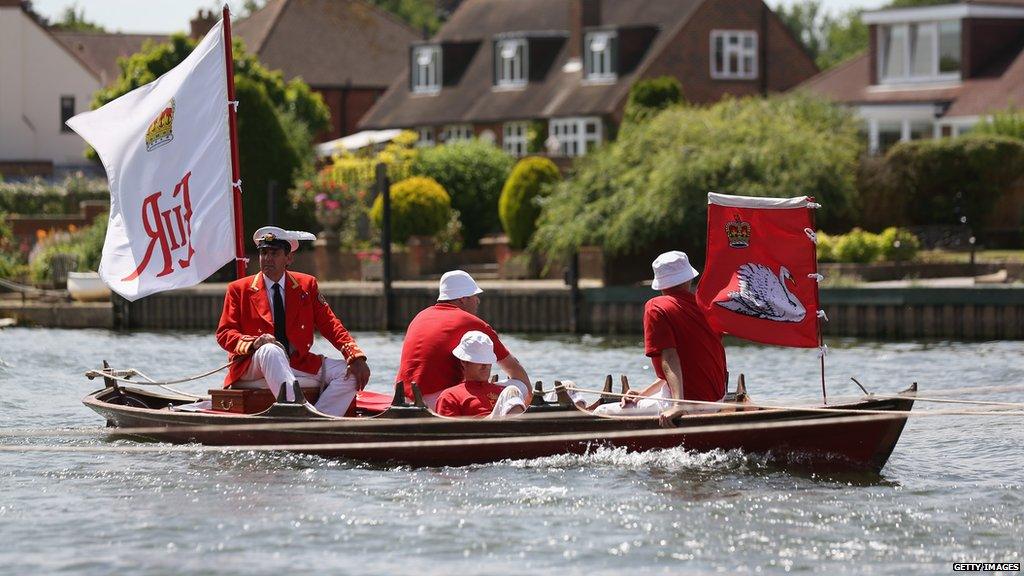
The Queen's swan marker and the accompanying Swan Uppers of the Vintners' and Dyers' Livery Companies use six traditional Thames rowing skiffs during the five-day journey upstream to ensure the swan population is maintained.
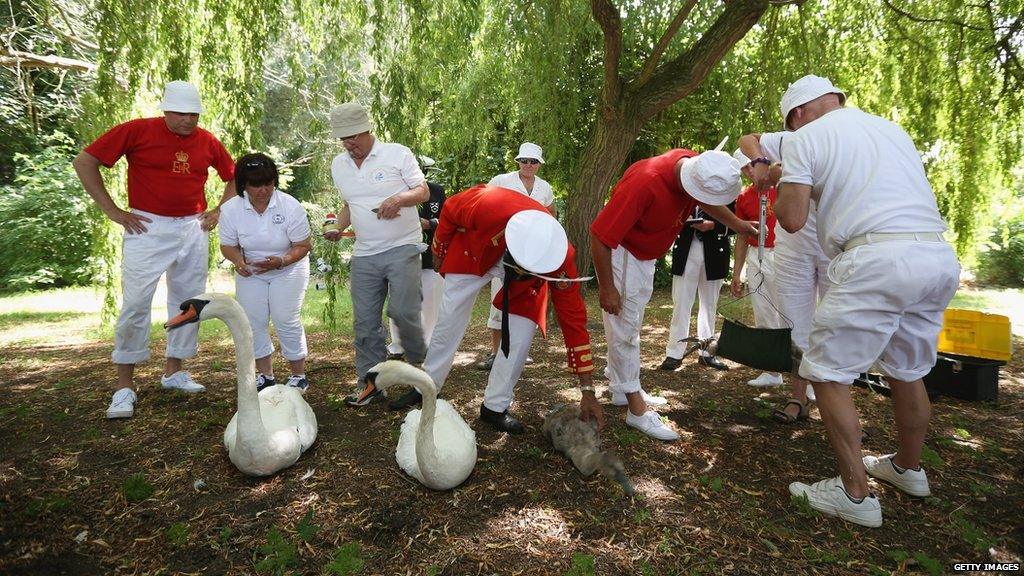
In medieval times the monarch would send teams of swan "uppers" up the Thames to find any unmarked swans and show sovereign ownership by notching their bills. Today, the upping is done for scientific purposes and the only mark left is a leg ring linked to the database of the British Trust for Ornithology.

Swan Upping was first introduced when mute swans were considered such a delicacy the Crown was granted right of ownership of all unmarked mute swans. Although swans are no longer eaten, "uppers" are still sent off every third week in July to lay claim to a new crop of cygnets.
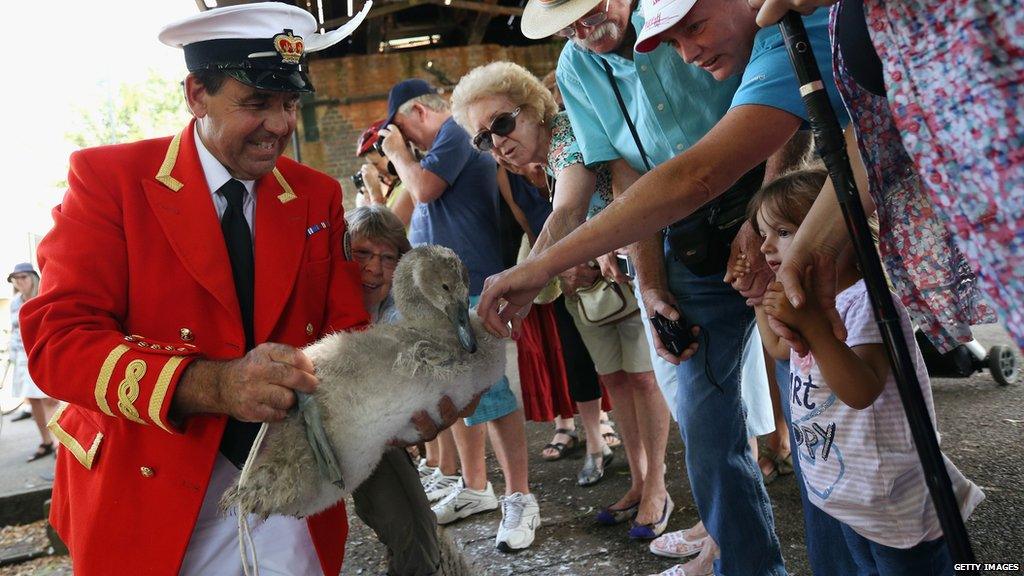
David Barber shows a newly-tagged cygnet to members of the public on the bank of the River Thames at Sunbury.
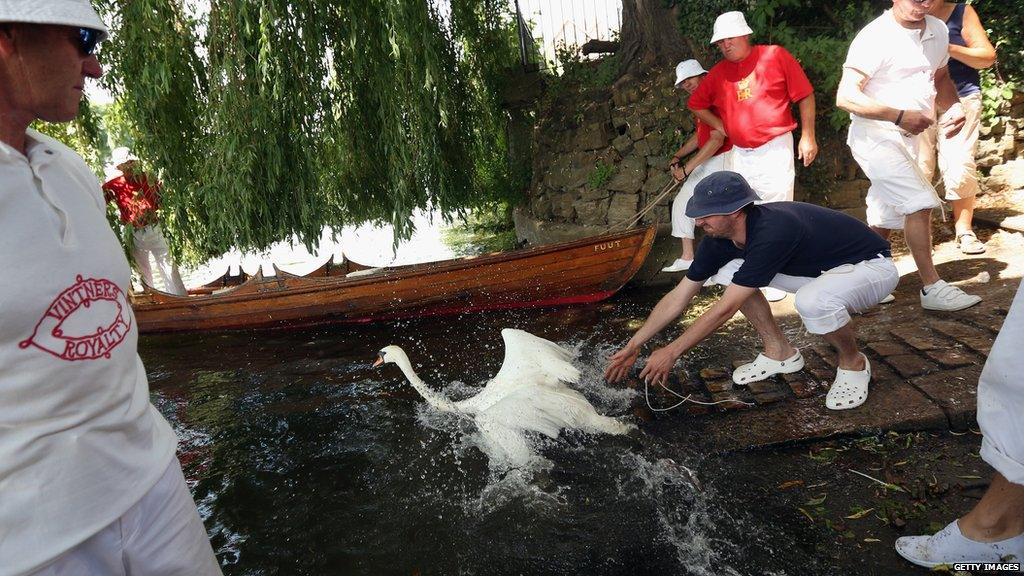
Once tagged, measured and assessed, all swans and cygnets are returned to the river by the "uppers". Last year's census had to be cancelled for the first time in its 900-year history, due to flooding.
- Published15 July 2013